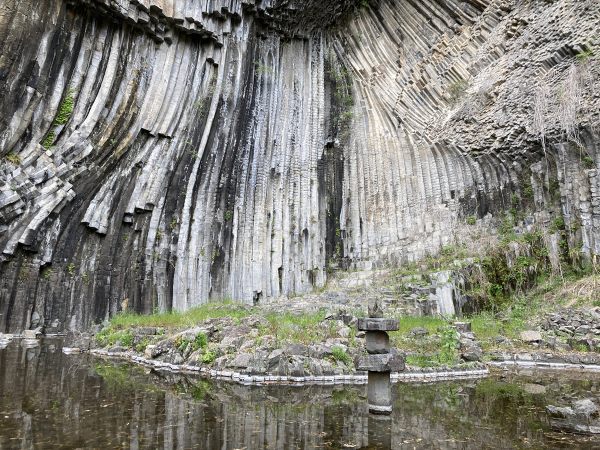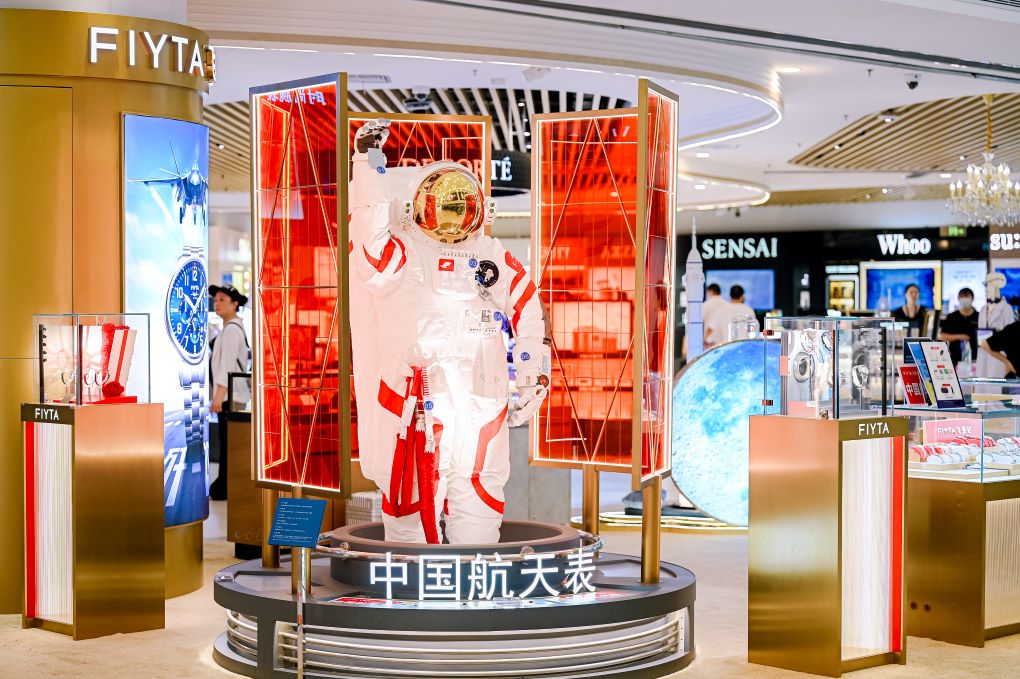Genbudo Park in Toyooka, Japan
Nestled in the hills along the Maruyama River in northern Hyogo Prefecture, Genbudo Park is a geological site unlike any other in Japan. It’s home to a series of natural caves formed about 1.6 million years ago when volcanic lava cooled and cracked into towering hexagonal basalt columns. Though other examples of columnar basalt exist around the world, few combine such dramatic formations with cultural significance and easy public access. The five caves found in the park are Genbudo Cave, Seiryudo Cave, Kita Suzakudo Cave, Minami Suzakudo Cave, and Byakkodo Cave. Each is named after legendary creatures from Chinese mythology, including the Azure Dragon and White Tiger. As visitors walk along the quiet stone paths, they can view towering basalt walls, some rising several stories high. The columns are so sharply defined that they appear almost impossibly precise. It was here, in the late 1800s, that researchers collected rock samples that led to the coining of the word “basalt” in modern geology. In recognition of its importance, Genbudo was designated a National Natural Monument in 1931, and in 2022 it was selected as one of the “100 Geological Heritage Sites of the World” by the IUGS, a UNESCO-affiliated organization. Even though it has become more popular in recent years, Genbudo still feels calm and uncluttered. The site combines striking rock formations, local folklore, and gentle riverside paths. Visitors often stop by for a quiet walk, a scenic break, or a moment to take in the natural surroundings.


Nestled in the hills along the Maruyama River in northern Hyogo Prefecture, Genbudo Park is a geological site unlike any other in Japan. It’s home to a series of natural caves formed about 1.6 million years ago when volcanic lava cooled and cracked into towering hexagonal basalt columns. Though other examples of columnar basalt exist around the world, few combine such dramatic formations with cultural significance and easy public access.
The five caves found in the park are Genbudo Cave, Seiryudo Cave, Kita Suzakudo Cave, Minami Suzakudo Cave, and Byakkodo Cave. Each is named after legendary creatures from Chinese mythology, including the Azure Dragon and White Tiger. As visitors walk along the quiet stone paths, they can view towering basalt walls, some rising several stories high. The columns are so sharply defined that they appear almost impossibly precise.
It was here, in the late 1800s, that researchers collected rock samples that led to the coining of the word “basalt” in modern geology. In recognition of its importance, Genbudo was designated a National Natural Monument in 1931, and in 2022 it was selected as one of the “100 Geological Heritage Sites of the World” by the IUGS, a UNESCO-affiliated organization.
Even though it has become more popular in recent years, Genbudo still feels calm and uncluttered. The site combines striking rock formations, local folklore, and gentle riverside paths. Visitors often stop by for a quiet walk, a scenic break, or a moment to take in the natural surroundings.






























![“[You] Build a Movie Like You Build a Fire”: Lost Highway DP Peter Deming on Restorations, Lighting and Working with David Lynch](https://filmmakermagazine.com/wp-content/uploads/2025/03/1152_image_03-628x348.jpg)






















![The Most Intelligent American Movie of the Year [THE BIG RED ONE: THE RECONSTRUCTION]](https://jonathanrosenbaum.net/wp-content/uploads/2011/12/the-big-red-one2.jpg)
![Cinematic Obsessions [THE GANG OF FOUR and SANTA SANGRE]](https://jonathanrosenbaum.net/wp-content/uploads/2010/12/labandedesquartre.jpg)

![Reinventing the Present [10]](https://jonathanrosenbaum.net/wp-content/uploads/2011/05/10-driver3.jpg)











































![‘Inside’ Review: Guy Pearce & Ed Cosmo Jarvis Elevate A Standard-Issue Aussie Prison Drama [Tribeca]](https://cdn.theplaylist.net/wp-content/uploads/2025/06/16154955/Inside-Guy-Pearce.jpg)

















































































































































































































































































![[Podcast] Problem Framing: Rewire How You Think, Create, and Lead with Rory Sutherland](https://justcreative.com/wp-content/uploads/2025/06/rort-sutherland-35.png)



















































































































